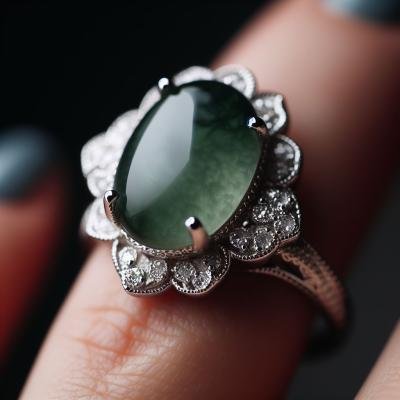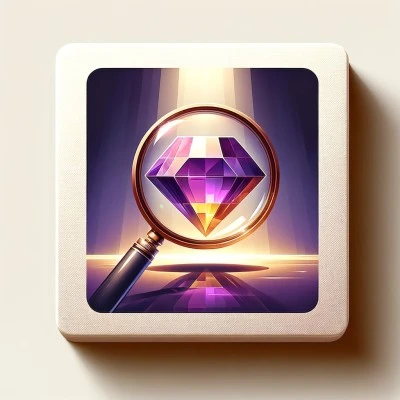Who Should Not Wear Lapis Lazuli? Harmonizing Stone and Spirit
Lapis lazuli, a stone revered throughout history for its deep, celestial blue, carries more than just aesthetic value. Its influence, believed by many to extend into the metaphysical realm, suggests that not everyone may benefit equally from its presence. The following exploration delves into the nuances of this gemstone, highlighting circumstances and individuals for whom the lapis lazuli may not be the most harmonious choice.
As an Amazon Associate, we earn a commission from qualifying purchases.
I. Introduction
A. Historical Significance
Lapis lazuli, with its mesmerizing deep blue hue, has been a symbol of royalty, wisdom, and truth since ancient times. The stone’s legacy dates back to the Neolithic age, when it was highly prized in civilizations such as the Egyptians, Sumerians, and Romans. Its ubiquity in the breastplates of high priests and the jewelry of pharaohs underscores its historical prominence. Renowned for its intense color and the intricate veins of pyrite that often traverse it, lapis lazuli has not only adorned the most lavish of artifacts but has also been ground into powder to create the ultramarine pigment favored by the artists of the Renaissance.
B. Metaphysical Properties
In the realm of metaphysical belief, lapis lazuli is more than a beautiful ornament. It’s considered a stone of wisdom, capable of unlocking mysteries by enhancing intuition and granting access to hidden knowledge. Often associated with the Third Eye Chakra, it’s believed to foster a deeper understanding of oneself and one’s spiritual journey. Its properties are said to promote clarity of mind, inner truth, and self-awareness, making it a favored stone among those seeking personal enlightenment and spiritual awakening.
II. Understanding the Sensitivities
A. Physical Considerations
While lapis lazuli is revered for its beauty and spiritual properties, it’s crucial to consider its physical composition. The stone contains minerals such as lazurite, calcite, and pyrite and may react differently to various environmental factors and skin types. For individuals with sensitive skin, prolonged contact with lapis lazuli, especially in jewelry form, may cause irritation or allergic reactions. It’s advisable to understand your skin’s sensitivities and the stone’s mineral composition before wearing lapis lazuli close to the body.
B. Emotional and Spiritual Resonance
Lapis lazuli’s intense energy may only resonate with some. In the realm of energy healing and crystal therapy, it’s believed that this stone’s powerful vibrations can be overwhelming or misaligned with certain individuals’ inner frequencies. Those who are emotionally vulnerable or undergoing a turbulent phase might find the energy of lapis lazuli too intense, leading to heightened emotions or discomfort. It’s essential to be mindful of one’s emotional and spiritual state when choosing to incorporate lapis lazuli into one’s life.
III. Who Should Not Wear Lapis Lazuli
A. Individuals with Certain Medical Conditions
Though not scientifically substantiated, anecdotal evidence suggests that individuals with certain medical conditions should approach lapis lazuli with caution. Those with ailments related to blood pressure, insomnia, or anxiety might find that the stone’s purported energetic properties exacerbate their symptoms. It’s always recommended to consult with a healthcare professional or a qualified practitioner in crystal therapy before using lapis lazuli as part of any wellness routine.
B. People with Specific Emotional Traits
Lapis lazuli’s properties of enhancing self-awareness and promoting truth can be confronting, making it a challenging stone for those not ready to face their inner truths or confront deep-seated issues. Individuals who are not in a place to process or handle intense emotional revelations may want to avoid wearing lapis lazuli until they feel more grounded and prepared to engage with the stone’s profound energy.
C. Those Aligned with Contrasting Energy Fields
In energy healing, it’s believed that each individual possesses a unique energetic field that may or may not harmonize with certain crystals. For those whose energy fields are in contrast with the vibrations of lapis lazuli, wearing the stone might result in a sense of unease, imbalance, or energy blockages. It’s crucial to be attuned to one’s energy and the stone’s vibrations to ensure a harmonious relationship.
IV. The Safe Use of Lapis Lazuli
A. Identifying Genuine Stones
In today’s market, the authenticity of lapis lazuli can sometimes be questionable. Imitations or lower-grade stones are often sold as genuine lapis lazuli, making it imperative for potential buyers to learn how to identify a real stone. Genuine lapis lazuli has a rich, royal blue color with flecks of pyrite and calcite. It should feel dense and cold to the touch. Purchasing from reputable dealers and seeking expert opinions can ensure the authenticity of the stone.
B. Proper Maintenance and Care
Proper maintenance is crucial to preserving the natural beauty and energetic properties of lapis lazuli. The stone should be kept away from harsh chemicals and prolonged exposure to direct sunlight. It’s also sensitive to high temperatures and pressure, which can cause it to crack or lose its color. Cleaning should be done gently with a soft, damp cloth, avoiding any abrasive materials that could scratch the stone’s surface.
V. Review of Lapis Lazuli and Sterling Silver Bracelet by Kartini Studio
A. Product Description
The Lapis Lazuli and Sterling Silver Bracelet exemplify craftsmanship and the allure of natural stones. Each bracelet features meticulously selected lapis lazuli beads, known for their deep celestial blue and natural golden inclusions. The sterling silver complements the lapis lazuli, adding a touch of elegance and durability to the piece.
B. Customer Feedback
Customers have praised the Kartini Studio bracelet for its aesthetic appeal and the quality of the lapis lazuli used. Many note the comforting weight and the smooth polish of the beads, along with the secure and stylish clasp. The bracelet is often described as a conversation starter, with its striking color and luxurious appearance.
C. Benefits of Wearing Lapis Lazuli
Aside from its visual beauty, wearing the Lapis Lazuli and Sterling Silver Bracelet is believed to offer several benefits. It’s said to enhance the wearer’s self-awareness, encourage self-expression, and bring peace. The stone’s connection to the Third Eye Chakra is thought to open the doors to intuition and insight, making it a favored accessory for those seeking spiritual growth.
D. Recommendations on How to Wear It
To maximize the benefits of the lapis lazuli bracelet, wear it on the left wrist, the side traditionally associated with receiving energy. It can be worn daily or during meditation and mindfulness practices to enhance spiritual connectivity. Pairing the bracelet with complementary stones, such as clear quartz or amethyst, can amplify its properties and provide a balanced energy flow.
IV. FAQs
Q: Can lapis lazuli be worn every day?
A: Yes, lapis lazuli can be worn daily. However, it’s important to understand your skin’s sensitivity to the stone and to ensure proper care to maintain its color and quality.
Q: How should I clean my lapis lazuli jewelry?
A: Lapis lazuli should be gently cleaned with a soft, damp cloth. Avoid using harsh chemicals or ultrasonic cleaners, as they can damage the stone.
Q: Is lapis lazuli suitable for all zodiac signs?
A: While lapis lazuli is believed to be particularly beneficial for certain signs like Sagittarius, it can be worn by anyone. However, individuals should be mindful of how the stone’s energy aligns with their personal energy field.
Q: Can lapis lazuli help with meditation?
A: Yes, lapis lazuli is known for its ability to deepen meditation, enhance spiritual awareness, and promote inner peace.
Q: Are there any stones that should not be worn with lapis lazuli?
A: There are no specific stones that shouldn’t be paired with lapis lazuli. However, it’s essential to consider the energetic properties and harmony between different stones when wearing them together.
VII. Conclusion
A. Summary of Insights
This exploration into the realm of lapis lazuli has unearthed its historical significance, metaphysical properties, and the sensitivities surrounding its use. While the stone is celebrated for its deep, celestial blue and the wisdom it’s believed to impart, understanding the nuances of its physical and energetic presence is crucial. Identifying genuine lapis lazuli, ensuring proper care, and being mindful of one’s resonance with the stone’s energy are paramount for a harmonious experience.
B. Personal Reflections
Delving into the world of lapis lazuli is a journey that intertwines the past with the present, merging historical reverence with contemporary curiosity. The stone’s ability to connect the wearer to deeper spiritual planes while adorning them with its physical beauty is a testament to its timeless allure. Whether as a tool for personal growth, a means to enhance meditation, or simply a stunning piece of jewelry, lapis lazuli continues to captivate and intrigue.
VIII. Suggested Readings
Before diving deeper into the world of lapis lazuli, arm yourself with knowledge. The following books offer a range of perspectives on this ancient stone, from its historical significance to its metaphysical properties.
- “Lapis Lazuli: Unveiling the Celestial Tapestry of Healing, Wisdom, and Transformation” – Traverse the mystical path of lapis lazuli and unlock the secrets of this celestial stone that has captivated humanity for millennia.
- “Battle Born: Lapis Lazuli” by Maximilian Uriarte – A graphic novel that not only tells a compelling story but also delves into the cultural and historical significance of lapis lazuli, set against the stark beauty of Afghanistan’s mountain villages.
- “A Biography of Lapis Lazuli: A Journey through the Bronze Age” – Explore the fascinating history of lapis lazuli, from ancient crafts to its influence on cultural and artistic practices throughout the ages.
After exploring these readings, one can appreciate not just the beauty of lapis lazuli but also the rich tapestry of history and meaning woven into every piece of this celestial stone. Whether you’re a collector, a practitioner of crystal healing, or simply someone who appreciates the profound beauty of natural stones, these books will deepen your understanding and connection to lapis lazuli.







